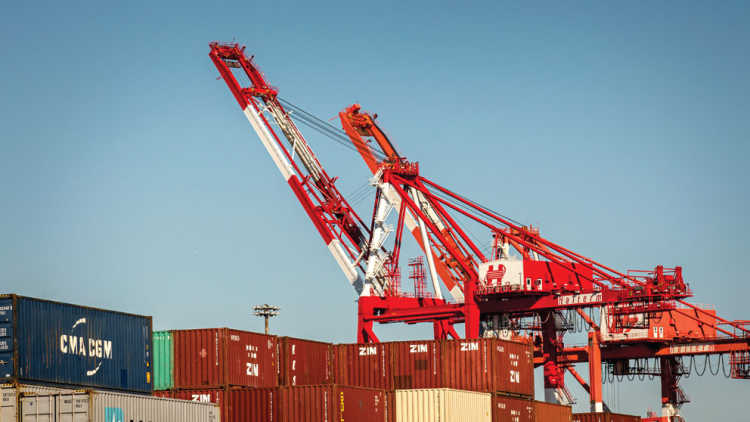World ag markets can be rough - how will producers manage?

The last two years have challenged the stability of many Canadian ag commodity exports. Geopolitical conflicts have escalated trade tensions and market access issues for many suppliers including Canada, while emerging competitors and dramatic weather events are altering global production levels and supply-demand balances.
In our latest trade report, Diversifying Canada’s agriculture exports: Opportunities and challenges in wheat, canola, soy and pulses, we look at one of the best ways to meet the challenge head-on.
Diversifying markets to expand the potential for export growth helps ensure buyers will be available when supply-demand balances shift and the trade landscape gets rocky.
Diversification as a risk mitigation tool
The report outlines how more can be done and describes which markets offer the most potential for further diversification.
The good news is that Canada has already done a lot of the heavy lifting. Existing free trade agreements and ongoing negotiations have laid the foundation for successful relationships with most of the world’s largest, fastest-growing importers of major crop commodities.
Canada’s ag industry associations have also worked hard to build on that foundation - organizing supply chains, developing contacts and securing contracts. But with a reputation for consistency, value and high-quality products, our commodities can be priced higher relative to other suppliers. Our shipments often have to travel long distances to reach foreign markets – adding further costs. Canada’s export performance, a cornerstone of producers’ farm revenues, therefore depends on agreements and the relationships they enable.
A strategy to expand export potential
Market conditions can also create opportunities for export growth within traditionally smaller markets. Weather hit European rapeseed production hard in 2019, which led to a need for additional imports to maintain their biodiesel production. That paved the way for more exports of Canadian canola diverted to Europe (which are typically minor) after China stopped buying it. The export price Canadian producers received from the European transactions dropped due to Canada’s reduced access to the world’s second-largest importer in 2018 – but the sales helped reduce potential losses.
Europe’s 2019 example is a timely illustration of why we need a healthy mix of buyers. Each of the four commodities we looked at has robust global markets. But the market structures vary, from the mature wheat market valued at US$32.5 billion in 2018 to the smaller canola market worth US$10.8 billion and pulse market valued at US$7.4 billion.
The concentration of each market also varies. China imports two-thirds of the global soy market while Egypt, the largest wheat importer in 2018, captured 8% of total wheat imports. Some markets are structured in a way that allows exporters like Canada to more easily diversify exports among a broader range of importers.
The bottom line
Canadian ag businesses have recently experienced market access issues for commodities, including canola, beef and pork exports to China, pulse exports to India and wheat exports to Italy. Most issues have been resolved for now, but a couple will linger into 2020. With a majority of Canada’s crop production exported each year, producers and businesses must have access to as many markets as possible to avoid the financial losses potentially incurred by a slowdown in the purchases by a major buyer.
Global ag trade appears to have entered a period of protracted disruptions and uncertain supply-demand balances due to heightened geopolitical tensions, weather events and production growth in emerging suppliers. It’s anyone’s guess if this will now be the norm, or we can expect this to be short-lived. Exports in this environment can easily drop, but in 2019, Canadian pork, beef, wheat and soy year-over-year export values have grown. Each sector has been able to reallocate exports to key markets – a much-needed boost in helping to mitigate Canada’s producers’ financial risk in a troubling year.
Next week, I’ll show the markets where Canadian goods already enjoy a competitive advantage, and which markets pose the most significant potential to grow our exports.

Economics Editor
Martha joined the Economics team in 2013, focusing on research insights about risk and success factors for agricultural producers and agri-businesses. She has 25 years’ experience conducting and communicating quantitative and qualitative research results to industry experts. Martha holds a Master of Sociology degree from Queen’s University in Kingston, Ontario and a Master of Fine Arts degree in non-fiction writing from the University of King’s College.